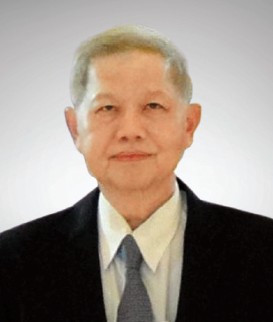Aborted Sudden Cardiac Death in Young Man with Familial Hypercholesterolemia: A Case Report and Review of The Literature
Main Article Content
Abstract
We report on a previously healthy young man who sustained an acute myocardial infarction at the age of 29. Invasive coronary angiography revealed a culprit lesion in the mid-left anterior ascending coronary artery, which was successfully stented. He was subsequently found to have a low-density lipoprotein-cholesterol of 286 mg/dl without other lipid abnormalities or exposures to atherosclerotic risk factors. He was noted to have xanthomas on his Achilles tendons. His family history revealed numerous relatives with severe dyslipidemia. We review the diagnosis, prognosis, and treatment of familial hypercholesterolemia.
Article Details
This is an open access article distributed under the terms of the Creative Commons Attribution Licence, which permits unrestricted use, distribution, and reproduction in any medium, provided the original work is properly cited.
References
2. Srimahachota S, Kanjanavanich R, Boonyaratavej S, et al.Demographic, Management Practices and In-Hospital Outcomesof Thai Acute Coronary Syndrome Registry (TACSR):The different from the Western World. J Med Assoc Thai2007;90(Suppl 1):1-11.
3. Kositchaiwat J. Treatment outcome in Thai Acute CoronarySyndrome cases, 7R: Ways to reduce mortality in AcuteCoronary Syndrome, Veerakul G and Kositchaiwat J eds;Srinakorn Design Printing, Bangkok, ISBN 978-616-348-612- 7;2015:278-96.
4. Veerakul G, Khajornyai A, Wongkasai S et al. Predicting andPreventing Cardiovascular Events in Asymptomatic Patients:A 10-Year Prospective Study. BKK Med J 2017;13(1):1-12.
5. Veerakul G. The developmental standard guideline for treatingacute ST elevation myocardial infarction. Official researchdocument for graduating of the 39th Air War College, 2005,Royal Thai Air Force. (http://www.library.rtaf.mi.th.)
6. Tungsubutra W, Treesukosol D, Buddhari W, et al. Acutecoronary syndrome in young adults: the Thai ACS Registry.J Med Assoc Thai 2007;90(Suppl 1):81-90.
7. Chen TS, Incani A, Butler TC, et al. The demographic profileof young patients (
8. Ahmad T, Alam MB, Khan A, et al. Study on Risk Factorsand Pattern of Coronary Artery Involvement in Young AcuteCoronary Syndrome Patients. Bangladesh Heart J 2017; 32(1):40-4.
9. Pasricha A, Batchelor W. When young hearts are broken:Profiles of premature myocardial infarction. Am Heart J2002;143:4-6.
10. Acute Myocardial Infarction Registry, Cardiovascular Researchand Prevention Center, Bhumibol Adulyadej hospital(unpublished data)
11. Wilson PW, D’Agostino RB, Levy D, et al. Prediction ofcoronary heart disease using risk factor categories. Circulation1998;97(18):1837-47.
12. World Health Organization (WHO). Prevention of CardiovascularDisease: Pocket Guidelines of Assessment and Managementof Cardiovascular Risk (WHO/ISH Cardiovascular Risk(WHO/ISH Cardiovascular Risk Prediction Charts for WHOepidemiological sub-regions AFR D and AFR E), Geneva2007. (Accessed January 7, 2017, at http://www.who.int/cardiovascular_diseases/guidelines/PocketGL.ENGLISH.AFR-D-E.rev1.pdf).
13. Williams RR, Hunt SC, Schumacher MC, et al. Diagnosingheterozygous familial hypercholesterolemia using newpractical criteria validated by molecular genetics. Am J Cardiol1993;72:171-6.
14. Scientific Steering Committee on behalf of the Simon BroomeRegister Group. Mortality in treated heterozygous familialhypercholesterolaemia: implications for clinical management.Atherosclerosis 1999;142:105-12.
15. Civeira F. Guidelines for the diagnosis and management ofheterozygous familial hypercholesterolemia. Atherosclerosis2004;173:55-68.
16. Austin MA, Hutter CM, Zimmern RL, et al. Familialhypercholesterol emia and coronary heart disease: a HuGEassociation review. Am J Epidemiol 2004;160:421-9.
17. Goldstein JL, Brown MS. History of Discovery: The LDLReceptor. Arterioscler Thromb Vasc Biol 2009;29(4):431-8.
18. Innerarity TL, Weisgraber KH, Arnold KS, et al. Familialdefective apolipoprotein B-100: low density lipoproteins withabnormal receptor binding. Proc Natl Acad Sci USA1987;84:6919-23.
19. Francke U, Brown MS, Goldstein JL. Assignment of thehuman gene for the low density lipoprotein receptor tochromosome 19: synteny of a receptor, a ligand, and agenetic disease. Proc Natl Acad Sci USA 1984;81:2826-30.
20. Abifadel M, Varret M, Rabes JP, et al. Mutations in PCSK9cause autosomal dominant hypercholesterolemia. Nat Genet2003;34:154-6.
21. Goldberg AC, Hopkins PN, Toth PP, et al. Familialhypercholesterolemia: screening, diagnosis and managementof pediatric and adult patients: clinical guidance from theNational Lipid Association Expert Panel on FamilialHypercholesterolemia. J Clin Lipidol 2011;5:133-40.
22. Livy A, Lye SH. Familial hypercholesterolemia in Asia: AReview. OMIC Res 2011;1:22-31.
23. Jeenduang N, Ruangpracha A, Promptmas C, et al. Twonovel D151Y and M391T LDLR mutations causing LDLRtransport defects in Thai patients with familial hypercholesterolemia.Clin Chim Acta 2010;411(21-22):1656-61.
24. National Institute for Health and Clinical Excellence (NICE).Identification and management of familial hypercholesterolaemia.2008. (Accessed January 8, 2017, at https://www.nice.org.uk/guidance/cg71/documents/familial-hypercholesterolaemianice-guideline2).
25. Reiner Z, Catapano AL, De Backer G, et al. The ESC/EASGuidelines for the management of dyslipidaemias: the TaskForce for the management of dyslipidaemias of the EuropeanSociety of Cardiology (ESC) and the European AtherosclerosisSociety (EAS). Eur Heart J 2011;32:1769-818.
26. Grundy SM, Cleeman JI, Merz CN, et al. Implications ofrecent clinical trials for the National Cholesterol EducationProgram Adult Treatment Panel III Guide- lines. J Am CollCardiol 2004;44:720-32.
27. Genest J, McPherson R, Frohlich J, et al. 2009 CanadianCardiovascular Society/Canadian guidelines for the diagnosisand treatment of dyslipidemia and prevention of cardiovasculardisease in the adult – 2009 recommendations. Can J Cardiol2009;25:567-79.
28. 2016 European Guidelines on cardiovascular disease preventionin clinical practice; The Sixth Joint Task Force of theEuropean Society of Cardiology and Other Societies onCardiovascular Disease Prevention in Clinical Practice. EurHeart J 2016;37:2315-81.
29. Wierzbicki AS, Humphries SE, Minhas R. Familial hypercholesterolaemia:summary of NICE guidance. BMJ2008;337:a1095.
30. Versmissen J, Oosterveer DM, Yazdanpanah M, et al. Efficacyof statins in familial hypercholesterolaemia: a long term cohortstudy. BMJ 2008;337:a2423.
31. Shapiro MD, Fazio S, Tavori H. Targeting PCSK9 fortherapeutic gains. Curr Atheroscler Rep 2015;17:499.
32. Shapiro MD, Fazio S. From lipids to inflammation newapproaches to reducing atherosclerotic risk. Circ Res2016;118:732-49.

